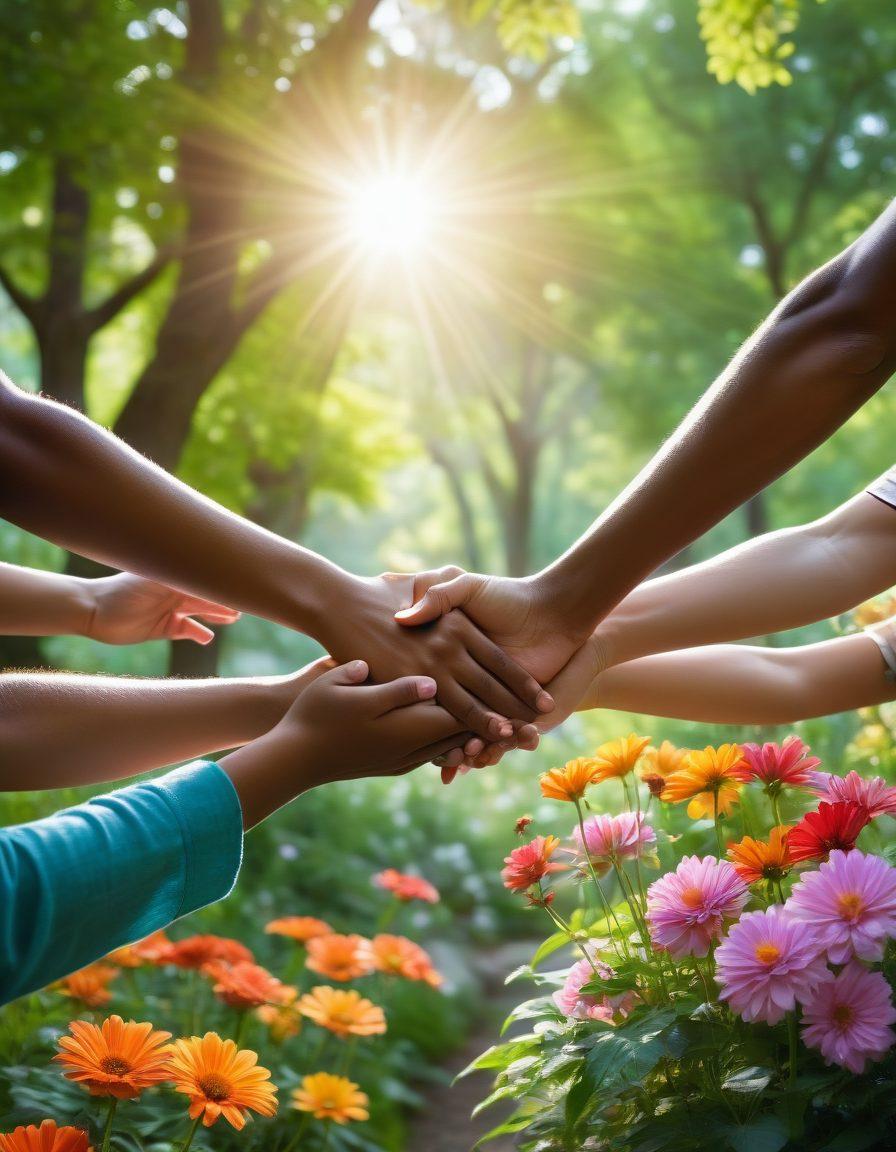Finding Light in the Shadows: A Community Approach to Overcoming Sadness and Sorrow
Sadness is a universal experience that we all confront at some point in our lives. Whether triggered by loss, disappointment, or the relentless march of time, feelings of melancholy can cast a long shadow over our hearts. But what if I told you that you don't have to face this burden alone? Community support, woven from love and compassion, has the power to transform despair into hope. As the saying goes, 'A shared joy is a double joy; a shared sorrow is half a sorrow.' So how do we unite as a community to ease the weight of sadness?
Imagine attending a gathering where hearts open, stories are shared, and the air buzzes with understanding and acceptance. It’s in these moments of connection that the walls built by grief and heartache begin to crumble. Community support groups, organizations, and collective initiatives provide safe spaces for individuals grappling with their own woe to come together. They become platforms where personal stories of sorrow transform into collective healing. Think about it—when was the last time you felt that wonderful warmth from being surrounded by people who truly get you?
Scientific studies have shown that those who engage with their communities while coping with depression often report lower levels of unhappiness and higher levels of emotional resilience. It’s a clear reminder that we are truly stronger together, no matter how heavy our hearts may be. When you hear laughter and see smiles, doesn’t it feel like the gloom you’ve held onto starts to fade? By participating in local networking initiatives, we find a support system that says: ‘You’re not alone in your grief; we are here for you.’
Communities can come alive with initiatives geared towards alleviating feelings of misery and despair. Think about group therapy sessions, workshops that promote mental health awareness, or even outdoor activities meant to rejuvenate the spirit. The more we engage with these associations, the more we create a ripple effect of positivity and support. Isn't it intriguing how a small act of kindness can uplift an entire room? Or how the act of simply sharing a meal can turn a gathering into a sanctuary for those experiencing sorrow?
In conclusion, community support not only lightens the load of sadness; it ignites a spark of connection that nurtures the soul. Whether it’s through an established organization or a grassroots movement among friends and family, reaching out to support one another is paramount. As we navigate the maze of grief and heartache, let’s remember that in uniting our hearts, we not only ease individual burdens but also build a network of resilience that shines brilliantly even in the darkest times. So, join your local group, reach out, and be the light for someone else—because, together, we can overcome the shadows of sadness.
From Gloom to Hope: The Power of Collective Healing Initiatives
In the labyrinth of human emotions, few feelings weigh as heavily as sadness and sorrow. These emotions can engulf us in a thick fog of despair, leaving us feeling isolated and overwhelmed. But what if I told you that there’s a path to navigate through this gloom—a collective journey toward hope? Welcome to the idea of collective healing initiatives, where communities band together to transform individuals' struggles into powerful stories of resilience and healing. When we open our hearts and our arms, we just might find the strength we didn’t know we had.
Imagine a gathering of compassionate souls, each person carrying their own heartache and grief, yet united by a desire to turn their unhappiness into healing. This is the essence of community—creating a platform where individuals can share their experiences, form connections, and tackle their issues together. There is something incredibly powerful about a group of people coming together; it’s like a warm shield against the cold winds of melancholy. In these safe spaces, the burden of sadness becomes lighter as the shared stories illuminate a path toward recovery.
One initiative that beautifully encapsulates this concept is Goorg, a community-driven organization that focuses on collective healing. Participants from all walks of life join forces to create a network of support, where feelings of misery are met with empathy rather than judgment. Through workshops, support groups, and open discussions, members find solace in knowing that their emotional battles are not fought in solitude. This can significantly dilute the depression that often comes with the perceived loneliness of heartache and despair. As the poet Rainer Maria Rilke once put it, 'The only journey is the one within.'
Engaging in such collective initiatives prompts a critical question: What would happen if we were more open about our struggles? We might just discover the rich tapestry of shared experiences that binds us. Initiatives like these serve as catalysts for change, encouraging participation in a culture where woe is not shamed but understood. With every gathering, we weave threads of connection that break the silence surrounding grief and sorrow. This could be anything from community yoga sessions to crafting circles, where the utilization of creativity acts as a powerful antidote to the heavy load of sadness.
As we step into the light of collective healing, it’s important to remember that healing isn’t linear; it ebbs and flows. By leaning on our community through various initiatives, we not only find hope in our personal battles but also contribute to the empowerment of others. No one should navigate their grief and despair alone. Instead of hiding from our shadows, let us come together in a spirit of unity, transforming isolation into camaraderie, and transforming woe into wisdom. After all, when we create spaces of love and support, we walk from gloom to hope, hand in hand.
Building Resilience Together: Transforming Grief into Strength Through Community
Sadness and sorrow are deeply woven into the human experience, surfaces only to remind us of our fragility. Yet, what if I told you that grief—often seen as a solitary burden—can serve as the foundation for a resilient community? Imagine transforming heartache into strength not just for ourselves but for those around us. By coming together in collective spaces, we can create initiatives that turn desolation into a beacon of hope. As Helen Keller once stated, 'Alone we can do so little; together we can do so much.' It is through this community spirit that we can all rise above the gloom and despair that sadness may hold.
In moments of overwhelming melancholy, the weight of unhappiness can feel unbearable. However, when individuals connect through a shared experience, they create a support network that nourishes resilience. This is more than just gathering; it is an organic interaction, a platform for open dialogue where our scars become stories of survival. Organizations and associations dedicated to mental wellbeing can be the bastions of comfort that foster healing. What if these gatherings could become the sanctuary where shared woe transforms into collective strength?
Consider the role of a group dedicated to turning grief into a force for good. These initiatives provide a structured space for expressing feelings of despair and heartache. Connecting through shared experiences allows us to cultivate empathy and understanding. It’s remarkable to see the way individuals uplift each other, and how, in the exchange of stories, we build a tapestry of hope. After all, how can we truly heal unless we acknowledge the wounds together?
Engaging in community action not only combats personal anguish but radiates a powerful message of solidarity. Each gathering is an opportunity for storytelling and transformation. The act of voicing our pain can break the chains of misery that bind us. It paves the way for others to step forward, illuminating their own paths to recovery. Change doesn’t happen in a vacuum. It blossoms in associations where individuals unite for a common cause. What could we achieve if we harnessed our grief and turned it into a shared mission?
Ultimately, resilience is not just an individual trait; it's a community treasure. By fostering initiatives that prioritize mental health, we give ourselves permission to feel, to grieve, and to emerge stronger. In essence, we transform sadness into a collective strength that can inspire others facing similar struggles. Let’s ask ourselves—how can we be the light in someone else's darkness? Together, we can shine bright despite the shadows of sorrow, building a network that stands resilient and ready to embrace all emotions, celebrating both our grief and our strength.


